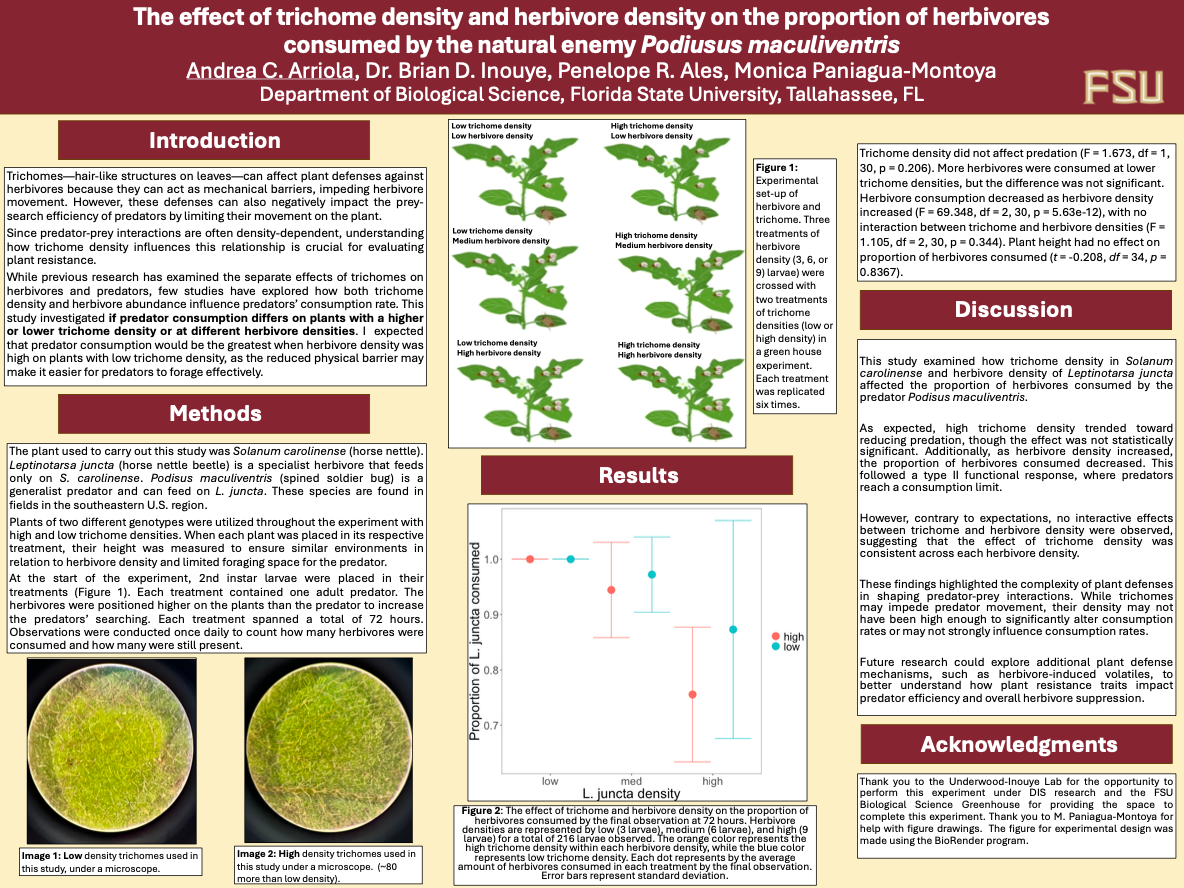Research Symposium
25th annual Undergraduate Research Symposium, April 1, 2025
Andrea Arriola Poster Session 4: 3:00 pm - 4:00 pm/ Poster #280

BIO
Hi! My name is Andrea Arriola. My hometown is Miami, Florida. My family is from Nicaragua and Argentina. I am a senior majoring in Biological Science, minoring in Chemistry and Public Administration. I am on the pre-dental track and I will be applying to dental school this summer to fulfill my dream of becoming an oral health doctor. My research focuses on the ecological interactions between plant defenses, herbivores, and predators. My appreciation for nature and the interconnectedness of the world around me has driven my interest in understanding the roles organisms play within ecological systems, making this research both intriguing and meaningful.
The effect of trichome density and herbivore density on the proportion of herbivores consumed by the natural enemy Podiusus maculiventris
Authors: Andrea Arriola, Dr. Brian D. InouyeStudent Major: Biological Science
Mentor: Dr. Brian D. Inouye
Mentor's Department: Department of Biological Science Mentor's College: College of Arts & Sciences Co-Presenters:
Abstract
Non-glandular trichomes, a hair-like structure on plants that can be used for defense against herbivores, can also impede predator movement and search efficiency, leading to lower predation rates on herbivores. Prey can be more accessible to predators in plants that have lower trichome densities. Because little is known on how both trichome density and herbivore density can affect the feeding behaviors on predators, their effects were investigated by using Solanum carolinense, containing stellate non-glandular trichomes, and its specialist herbivore, Leptinotarsa juncta, with the predator Podisus maculiventris. A greenhouse mesocosm experiment utilized a factorial design, using low and high trichome densities with varying herbivore densities (3, 6, 9 larvae) over 72 hours to measure the proportion of herbivore consumption by predators. There was no significant difference in the proportion of herbivores consumed between high and low trichome densities, although more herbivores were consumed in the low trichome density treatments. The proportion of herbivores consumed decreased significantly with increasing herbivore density, and no interactive effects between trichome and herbivore densities were observed. Higher herbivore densities decrease the proportion of herbivores consumed by predators likely due to predator satiation limits. The lack of significant interactive effects suggests that the trichome density treatments may not have been sufficient enough to impact predator feeding behaviors with herbivore density.
Keywords: ecology, plant-insect interactions


